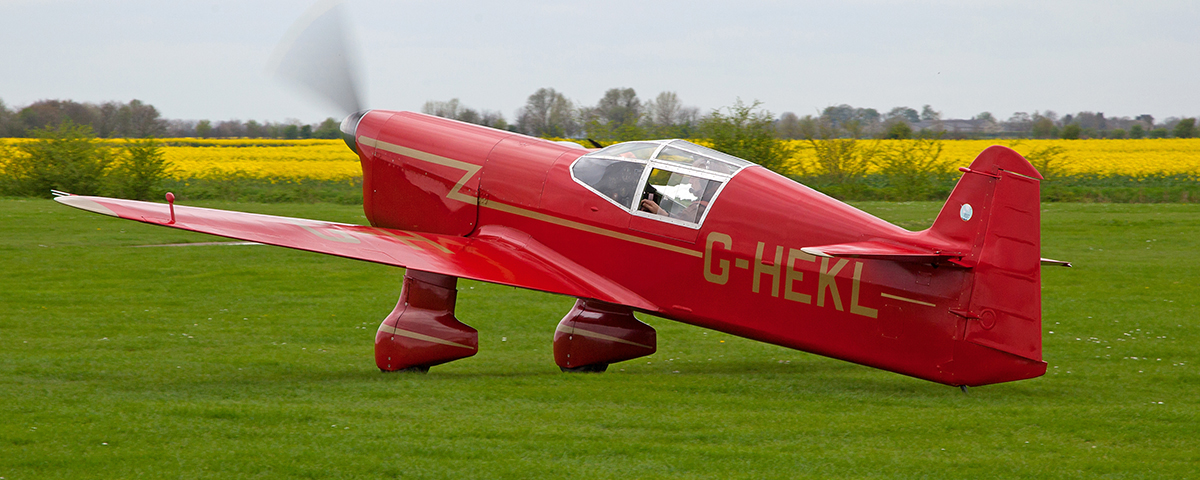There is no clearer evidence of the difference between two cultures than the fact that the British to this day consider the 1930s Percival Mew Gull the ultimate raceplane. Americans would, of course, nominate something as testosterone-laden as Rare Bear or Strega, but in the late ’30s, Mew Gulls dominated British air racing, which largely consisted of long-distance attempts to reach the margins of the British Empire, and handicap races, in which entrants were assigned presumed race speeds generated by complex formulae, and the winner was the one that beat its handicap by the biggest margin.
The sleek Mew Gull was a 205-hp, fixed-gear single-seater small enough that its best-known pilot, Alex Henshaw, would taxi it by walking alongside the cockpit with one hand on the throttle, bulling the rest of the airplane along with body English. (Henshaw scored several of the Mew Gull’s most famous race victories and went on to become Supermarine’s busiest Spitfire production test pilot.)
The Mew Gull was designed by Australian barnstormer, racer and film and charter pilot Edgar Percival, who moved to England and in 1933 set up the Percival Aircraft Co. “The Hat” Percival (thanks to the fedora he wore while racing) was in a sense the aviation equivalent of fellow Brit Colin Chapman, the Lotus racecar engineer whose mantra was “Simplicate and add lightness.” The Mew Gull’s wingspan was 9 feet narrower and its length 6 feet shorter than a Cessna 152’s. Its cockpit was only 2 feet wide, which is particularly relevant considering the fact that one of the Mew Gull’s Henshaw-set records was a round-trip flight between London and Cape Town, South Africa—12,800 miles in just over 77.5 hours. It’s a class record that remains unbroken.
A Mew Gull was the first civil aircraft to exceed 200 mph, and by the time the fastest one raced, its top speed was over 270 mph. Only six were built, and just one survives, flown by Britain’s Shuttleworth Collection. The one you see above is a perfect replica, built by Englishman David Beale over the span of six years, with the help of precise engineering drawings produced during the most recent restoration of the Shuttleworth airplane. Its engine is a standard 205-hp de Havilland Gipsy inverted six, and Beale found a brand new Gipsy still in its 1936 crate. “It started on the second compression,” he reports. Beale’s Mew Gull made its first public appearance at a British vintage gathering this past April.
Percival was a tiny company, though it later manufactured some well-known British military trainers. It’s often forgotten that its very last project, after Percival had been bought by Hunting Aircraft, was what became the BAC One-Eleven short-haul jet—a long haul from the Mew Gull.





